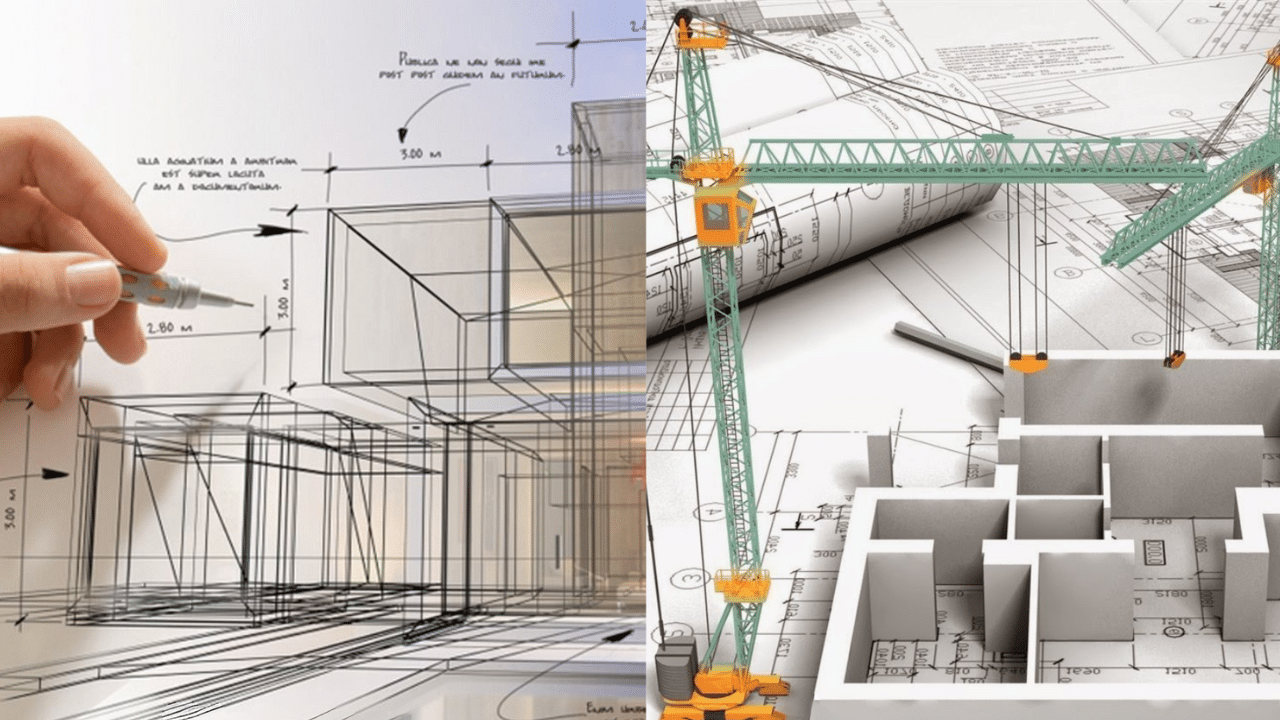When planning my building project, I noticed how the roles of structural engineers and architects often blur in people’s minds. Both professionals are essential, but they serve dramatically different functions in bringing a structure to life.
As the architect, I focus on the creative vision, spatial flow, and classy elements, while my structural engineer ensures the building stands strong against gravity, weather, and time.
This distinction matters because hiring the right professional at the right time can save me thousands in costs and months in delays.
In this guide, I’ll clarify exactly what each expert contributes to my project, when I need one versus the other, and how our collaboration creates buildings that are both beautiful and enduring.
What Is Architecture?
Architecture is the art and science of designing buildings and other physical structures, focusing on functionality, aesthetics, and user experience.
Architects create spaces that fulfill client needs while considering factors like environmental impact, cultural context, and visual appeal.
They develop conceptual designs, produce detailed drawings, select materials, and coordinate with various stakeholders throughout the building process.
What Is Structural Engineering?
Structural engineering is the specialized branch of engineering concerned with designing and analyzing the physical integrity of buildings and structures.
Structural engineers calculate how buildings will withstand forces like gravity, wind, earthquakes, and human usage.
They determine appropriate materials, dimensions, and construction methods to ensure stability and safety.
Structural engineers focus on preventing structural failure through mathematical analysis and an understanding of material properties, ensuring buildings remain safe throughout their lifespan.
Architecture vs. Structural Engineering

Understanding the distinct yet complementary roles these professionals play is crucial for anyone planning a building project.
| Aspect | Architecture | Structural Engineering |
|---|---|---|
| Primary Focus | Aesthetics, spatial design, and user experience | Stability, safety, load-bearing capacity |
| Key Responsibilities | Creating a building concept, layout, and appearance | Ensuring the structure can withstand forces and stresses |
| Design Approach | Form, function, and human interaction | Mathematical calculations and physics principles |
| Materials Concern | Visual appeal, sustainability, and user comfort | Strength, durability, and structural performance |
| Project Role | Leads conceptual design and overall vision | Develops supporting framework and systems |
| Client Interaction | High – translates client needs into designs | Limited – typically works through an architect |
| Software Tools | CAD, BIM, and visualization software | Structural analysis, FEA, load calculation tools |
| Regulatory Focus | Zoning laws, building codes, and accessibility | Building codes, safety standards, and material specifications |
| Timeline Involvement | Early concept through completion | After the initial design through construction |
| Artistic Component | High creative expression is central | Low – primarily technical problem-solving |
Educational and Career Pathways
Architects typically need a Bachelor’s or Master’s of Architecture from an accredited program, followed by completing the Architectural Experience Program (3,740 documented hours) and passing the Architect Registration Examination.
Their education emphasizes design principles and visual communication, and their career paths include various specializations, such as healthcare or historic preservation.
Structural engineers usually require a Civil Engineering degree with a structural focus, followed by passing the Fundamentals of Engineering exam, gaining four years of experience, and completing the Professional Engineering exam.
Their training centers on mathematics and materials science, and their careers span from building design to seismic engineering and bridge construction.
Collaborative Dynamics: Merging Art and Science
The successful creation of exceptional buildings hinges on the seamless partnership between architects and structural engineers.
This collaboration brings artistic vision together with technical feasibility to create buildings that are both beautiful and sound.
Key Aspects of Collaboration
- Early Integration – Partnership begins during the conceptual phase with architects presenting designs and engineers offering structural solutions.
- Ongoing Communication – Regular coordination meetings throughout the project lifecycle prevent costly revisions.
- Conflict Resolution – When design challenges structural limits, technical discussions, and creative compromise produce solutions.
- Digital Tools – Building Information Modeling (BIM) revolutionizes collaboration with real-time coordination.
Case Studies: Real-World Applications
Examining how architects and structural engineers tackle different building challenges reveals the practical application of their specialized skills and collaborative approaches.
Residential Projects

In home construction, architects lead with designs addressing family needs and aesthetics, while engineers ensure safety and buildability.
A California hillside home featured an architect’s vision for glass walls, requiring the engineer to design a specialized steel frame system that maintains openness while providing seismic stability.
Commercial Buildings

Large-scale projects demonstrate complex collaboration amid multiple stakeholders and regulations. For a Chicago office tower, engineers designed transfer beams enabling the architect’s column-free lobby vision.
In retail spaces, engineers develop hidden support systems for distinctive brand features, like a flagship store’s floating staircase that appeared weightless while exceeding safety codes.
Historical Structures

Preservation projects demand specialized expertise from both professions. During a 19th-century theater renovation, architects restored ornate details while engineers reinforced existing trusses with concealed modern materials.
For an industrial warehouse conversion, engineers designed steel reinforcement collars for deteriorated timber columns, preserving character while providing essential structural support.
Making the Choice: Who Do You Need?
Selecting the right professional requires matching your project needs with appropriate expertise. For design-focused projects, prioritize architects; for structural challenges, start with engineers. Always check local requirements for professional stamps.
When interviewing candidates, ask about relevant experience, collaboration history, and problem-solving approaches. Watch for red flags like reluctance to provide references or dismissive attitudes toward other professionals.
Consider integrated firms offering both services for seamless collaboration and single-point accountability. If hiring separately, establish clear communication channels and decision processes early.
Conclusion: Where Vision Meets Structure
The architect-engineer relationship represents a powerful partnership where vision meets reality.
While architects craft spaces that inspire and function for human needs, structural engineers translate those designs into physically possible structures that will stand for generations.
Neither profession can fully replace the other, and the best buildings emerge when both experts collaborate from early stages.
Their combined expertise will save you time, money, and potential heartache down the road.
Have you worked with architects or structural engineers before?
What was your experience with their collaboration? Share your thoughts in the comments below!
Check our other construction and design guides to make your next building project a seamless success!
Frequently Asked Questions(FAQs)
Can I Hire Just an Architect for My Building Project?
Simple projects may only need an architect, but most buildings require both professionals and local codes often mandate engineer approval for structural elements.
Who Should I Hire First – the Architect or The Structural Engineer?
Hire the architect first for design development, then bring in an engineer, though complex projects benefit from simultaneous engagement from the start.
How Much More Expensive Is It to Hire Both Professionals?
\While initial costs increase, hiring both professionals typically saves money long-term by preventing structural issues, design revisions, and construction delays.
What Happens if My Architect and Structural Engineer Disagree?
Professional disagreements are normal and beneficial, leading to innovative solutions that balance design intent with structural integrity.


